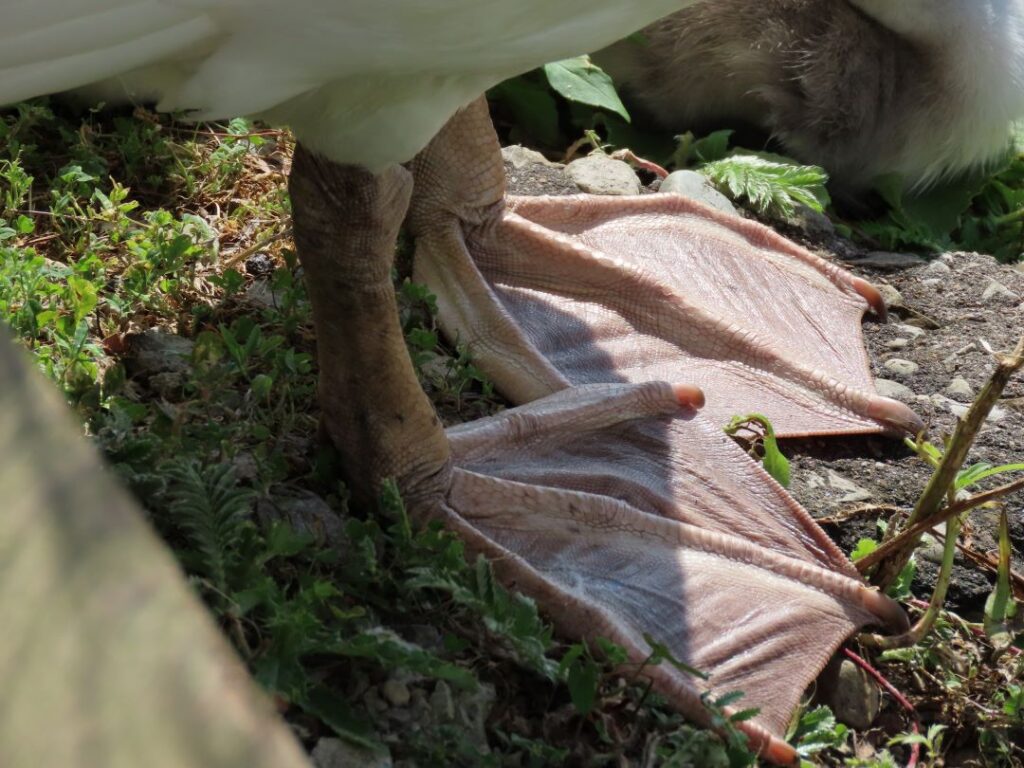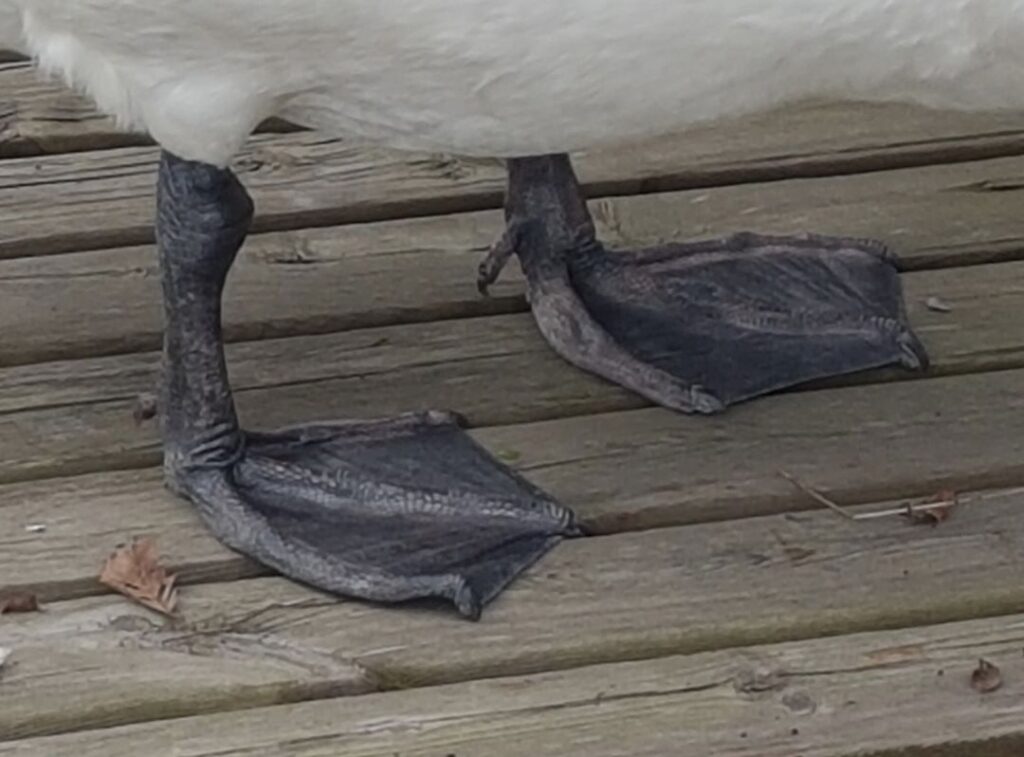Adult Mute Swans all have white feathers and orange beaks – but did you know their feet give clues as to what they looked like as cygnets (young swans)? That’s because there are two colour “morphs” or variations of swan. “Royal” morphs are greyish-brown as cygnets and retain dark grey or black feet into adulthood. “Polish” or “leucistic” morphs are beigy-white as cygnets and have lighter beige feet even as adults. In the UK, the monarch, now King Charles, has the right to claim any Mute Swans in open water. The Royal morph, which is the more common in the UK, takes its name from that long association with the crown. Over a century ago “Polish” was attached to the lighter morphs because birds imported to Britain from Poland and eastern Europe often contained this variation. “Leucistic” refers to a partial loss of pigmentation.
Both morphs occur in North America and can occur within the same brood, though Royals are more common. The photo above shows a Polish cygnet and her Royal sibling at four and a half months old.
As real feathers grow in and replace the cygnets’ original fluffy down, both morphs get whiter, though Royals retain patches of darker feathers for 18 months or more. Royal morphs’ beaks also typically take longer to change from the juvenile black to the bright orange colour they have when mature.
When they are mature the only way to tell a Royal from a Polish is to see the colour of their feet.

The same Polish morph is pictured here at two days old, in front of her two Royal morph siblings. Notice her lighter beak, down, and legs.

The beige feet of an adult Polish morph Mute Swan.

The darker foot of an adult Royal morph Mute Swan.

